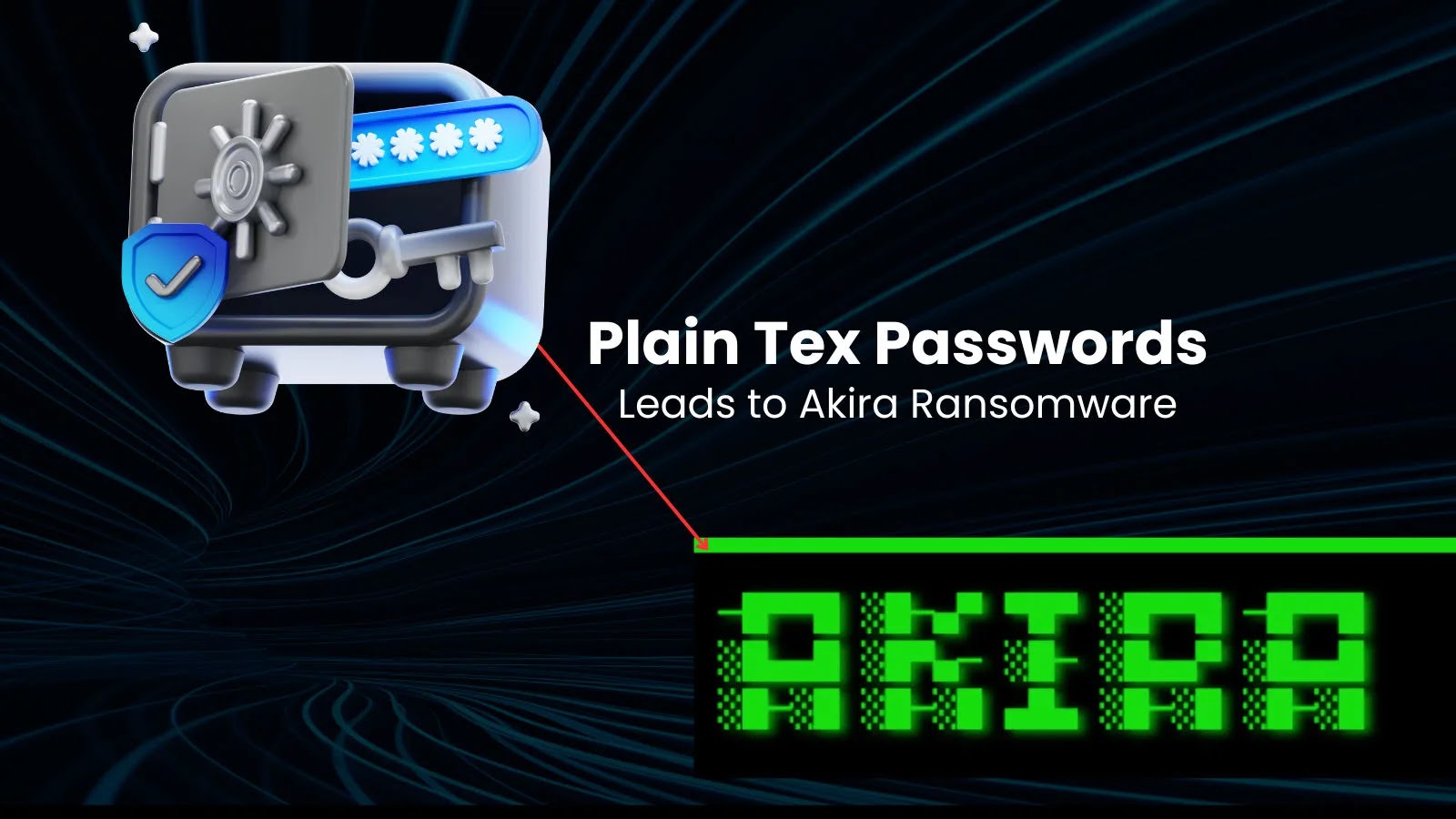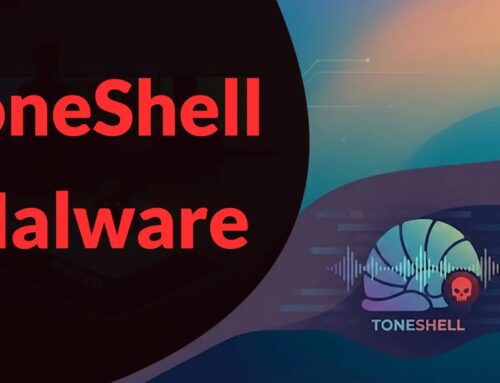
How a Plaintext File On Users’ Desktops Exposed Secrets Leads to Akira Ransomware Attacks
The Unseen Danger: How a Plaintext File Can Unlock Your Enterprise to Akira Ransomware
In the intricate landscape of enterprise cybersecurity, even the most seemingly innocuous details can harbor catastrophic potential. A recent incident highlights this stark reality: a threat actor, having initially breached a system via a vulnerable SonicWall VPN device, leveraged a single plaintext file containing critical recovery codes to escalate their attack dramatically. This seemingly minor oversight paved the way for an attempted Akira ransomware deployment and underscored a fundamental security principle – the profound risk associated with unencrypted, sensitive data.
The Anatomy of an Akira Ransomware Attack Escalation
The incident unravels with a common initial access vector: a compromised SonicWall VPN. While the specific vulnerability exploited isn’t detailed in the provided source, it’s crucial to acknowledge that unpatched network devices or weak credential hygiene often leave these gateways exposed. For context, historical vulnerabilities like CVE-2021-20037 and CVE-2021-20038 in SonicWall products have allowed attackers to gain unauthorized access. However, the subsequent escalation is where this particular case provides a critical lesson.
Once inside, the attacker performed reconnaissance, a standard phase in the kill chain. Their discovery of Huntress recovery codes, stored in an unencrypted plaintext file directly on a user’s desktop, proved to be the pivotal moment. These codes, designed for legitimate security agent recovery, became the keys to the kingdom. With these credentials, the threat actor successfully logged into the client’s security portal, gaining administrative control. From this vantage point, their objectives were clear: to neutralize defenses by uninstalling security agents and to obstruct incident response efforts by attempting to remediate outstanding alerts, clearing the path for the final payload – Akira ransomware.
The Peril of Plaintext: Why Unencrypted Data is a Goldmine for Attackers
The core of this incident’s lesson lies in the simple yet often overlooked danger of plaintext storage. Any sensitive information – be it passwords, API keys, private certificates, or, as in this case, security agent recovery codes – stored without encryption is a direct gift to an attacker who has already breached the perimeter. It bypasses complex authentication mechanisms and provides immediate access to further resources.
The “plaintext file on a user’s desktop” scenario is particularly alarming because it represents a common user habit: convenience over security. Users, often under pressure, may save such information for quick access, unaware of the profound risk it introduces to the entire organization. Even if only one part of the network is compromised, a plaintext file can offer the lateral movement capabilities attackers need to achieve their ultimate goal, whether it’s data exfiltration or, as seen here, ransomware deployment.
Akira Ransomware: A Persistent Threat
Akira ransomware has been a notable threat in the cybersecurity landscape, known for its double-extortion tactics – encrypting data and exfiltrating it for additional leverage. Its operators continually evolve their methods, targeting a wide array of industries. The initial access and privilege escalation methods vary, but the end goal remains consistent: maximum disruption and financial gain. This incident illustrates how even robust security solutions like Huntress can be undermined if their recovery mechanisms are not secured with the same rigor as the agents themselves.
Remediation Actions: Fortifying Defenses Against Similar Attacks
Preventing such incidents requires a multi-layered approach focusing on both technical controls and user education. Here are critical remediation actions:
- Eliminate Plaintext Storage: Categorically forbid the storage of any sensitive credentials, keys, or recovery codes in unencrypted plaintext files on local machines, network drives, or cloud storage.
- Implement Secure Credential Management: Utilize enterprise-grade password managers or secret management solutions for all sensitive information. These tools encrypt data at rest and in transit, often integrating with identity providers for secure access.
- Enforce Strong Authentication for VPNs: Mandate Multi-Factor Authentication (MFA) for all VPN access. Regularly patch and update VPN appliances to mitigate known vulnerabilities.
- Principle of Least Privilege: Ensure users and systems only have the minimum necessary access to perform their functions. Recovery codes for security agents should ideally be stored in a secure, audited location, accessible only to authorized administrators under specific circumstances.
- Endpoint Detection and Response (EDR) & Antivirus Configuration: Ensure EDR and antivirus agents are configured with tamper-protection features enabled to prevent unauthorized uninstallations. Regularly audit agent health and reporting.
- Security Awareness Training: Continuously educate employees on the dangers of storing sensitive information insecurely, recognizing phishing attempts, and adhering to strict security protocols. Emphasize the “why” behind policies.
- Regular Security Audits and Penetration Testing: Proactively identify vulnerabilities, including the insecure storage of credentials, before attackers do.
- Incident Response Planning: Develop and regularly test a comprehensive incident response plan that includes procedures for compromised credentials, ransomware, and the recovery of security agents.
Tools for Detection, Scanning, and Mitigation
| Tool Name | Purpose | Link |
|---|---|---|
| HashiCorp Vault | Secret Management, storing sensitive credentials securely | https://www.vaultproject.io/ |
| 1Password Business / LastPass Enterprise | Enterprise Password Management, secure storage of credentials | https://1password.com/business/ |
| Endpoint Detection and Response (EDR) Solutions (e.g., Huntress, CrowdStrike) | Real-time threat detection, incident response, and tamper protection | https://www.huntress.com/ (Example) |
| Vulnerability Scanners (e.g., Nessus, Qualys) | Identifying unpatched systems and misconfigurations on network devices | https://www.tenable.com/products/nessus (Example) |
Key Takeaways
This incident serves as a stark reminder that robust security extends beyond perimeter defenses. A single plaintext file, seemingly innocuous, can unravel an entire security posture, providing attackers with the keys to escalate privileges and deploy devastating payloads like Akira ransomware. Prioritizing secure credential management, enforcing strong authentication, and continuous security awareness training are not merely best practices; they are essential safeguards against the ever-present and evolving threat landscape. The weakest link is often not a sophisticated zero-day, but a simple oversight in data handling





